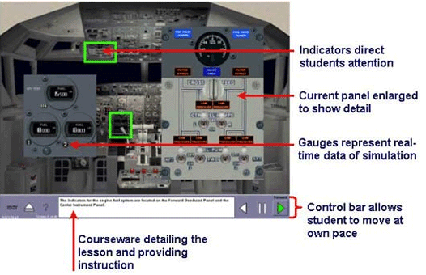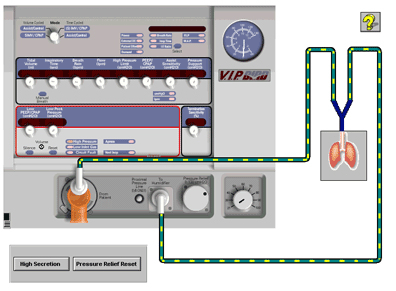-
Simulation-based training
普通类 -
- 支持
- 批判
- 提问
- 解释
- 补充
- 删除
-
-
Introduction
INCORPORATION OF SIMULATION-BASED training provides numerous benefits to corporations.This article explores how companies are using simulation-based training today to achieve these benefits. From the avation industry to medical field simulation-based training is increasing employee performance,skill level, and saftey.
-
What are the simulation-based training trends?
Technical companies that are required to train employees on dangerous or expensive equipment are most likely to benefit from simulation-based training. Simulations allow the user to observe the impact of their choices without the outcomes having any impact on the real operation (Smith1999). Trainees can learn how to respond to emergencies, how individual actions and decisions effect entire processes, and how to operate complex pieces of equipment.

Figure 1. Simulated Airplane cockpit.
The airplane cockpit simulation takes on a new approach to simulation training. The user has the opportunity to observe how all the components of the cockpit work together. This approach allows the user to gain a persepctive of the interactions and correlations between the numerous components contained in an airplane cockpit.
This type of system development can support a great variety of training needs. The simulation gears the user to focus on the integration, interaction, and correlation of all the components in the cockpit and provides them with a learning environemnt that is equalivent to the actual system itself. (Edens1990).-
Benefits of Simulation Training
The following three examples illustrate the benefits and trends of simulation-based training in today's corporate training environment.
Example 1
Medical Respirator Pump
The medical respirator pump provides medical personnel with the benefit of interactive training on a simulation. Through the use of simulations, valuable operating equipment is not tied up and the risk of injurying patients is decreased..
Users can train off-line and at another location out of the hospital facility any time. Hopitals can test and certify personnel for competency in through the task-based courses. In addition, records on each user can electronicaly be maintained through an LMS.
Example 2
Anesthesia Machine
The Anesthesia Machine simulation offers the following benefits of interactivity:
Show Me: users are shown how to perform functions on the machine
Try Me: users try performing the functions on their own
Freeplay: users can interact create their own senarios while operating the machine.Example 3

PGM Tester
The PGM Tester simulation is designed with cause and effect senarios. Mechanics can trigger vehicle faults and instantly observe the result in the simulation.
After completing an on-line course, users need to practice what they just learned on a simulated PGM Tester. First users are provided with senario based exercises. On screen text provides the user with step-by-step instructions and feedback to complete the execise correctly.
Next, the user has the opportunity to try the exercise on their own. In this situation users receive feedback for incorrect steps, but must perform the procedure without guideance. The user can practice performing procedures as if they were operating the real device.-
Author
Kimberley Beck
Graduate Student
SDSU Educational Techonology -
-
- 标签:
- benefits
- based
- medical
- simulation
- machine
- airplane
- pgm
- simulation-based
- training
- try
- cockpit
-
加入的知识群:



学习元评论 (0条)
聪明如你,不妨在这 发表你的看法与心得 ~